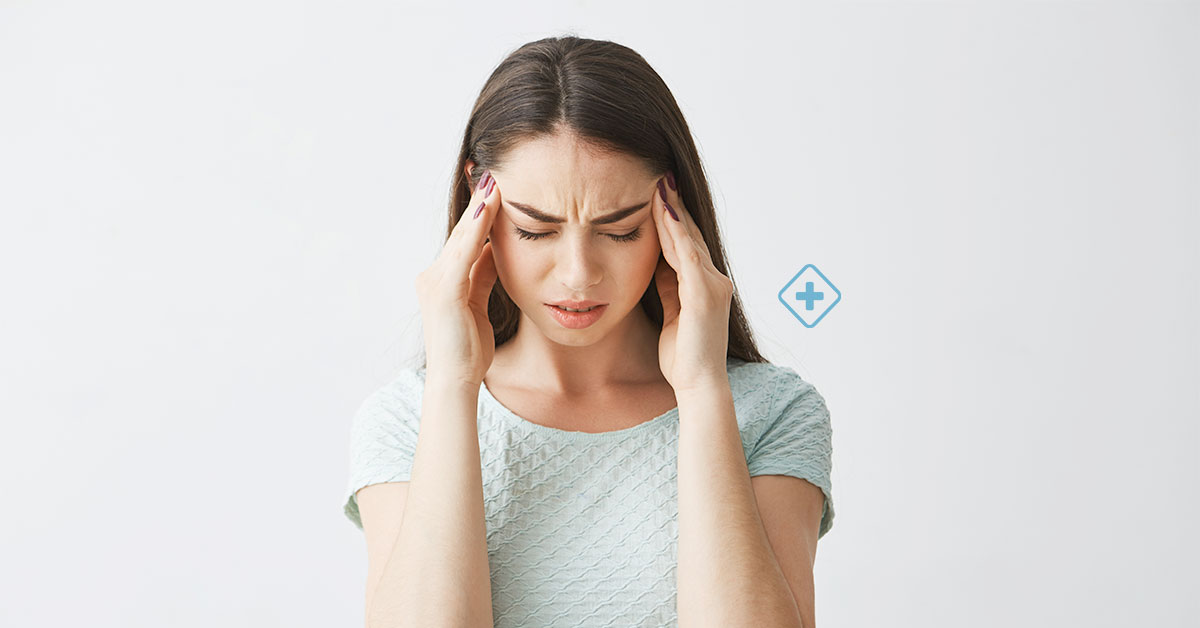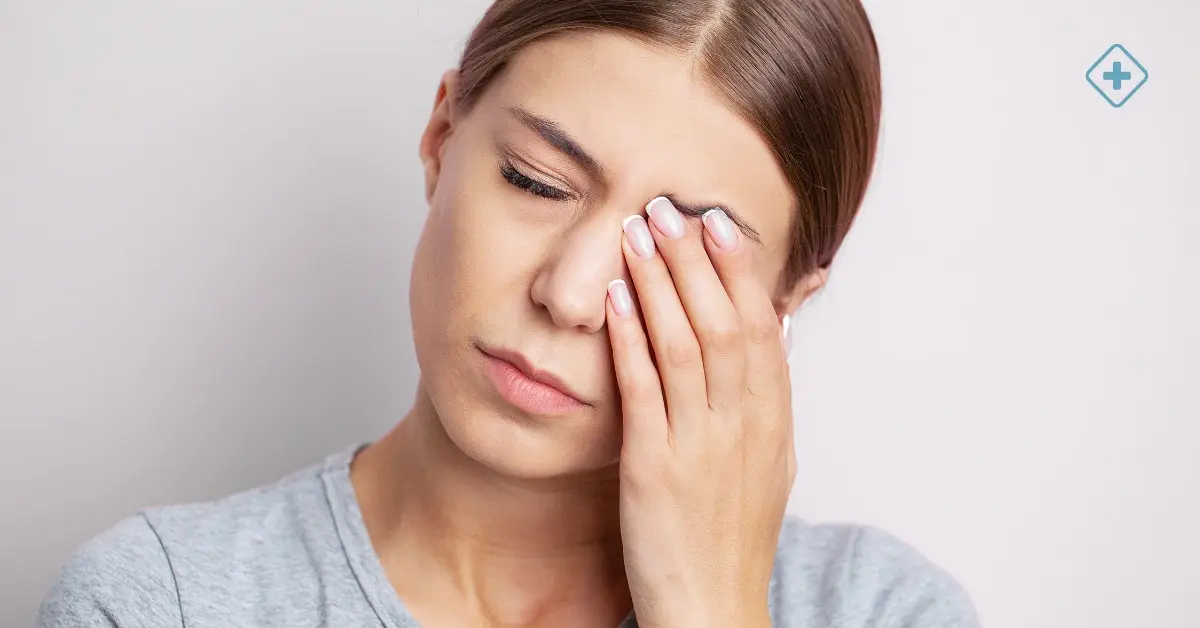
Migraine
Migraines are manifested by a moderate to severe headache lasting 4 to 72 hours, these attacks are associated with nausea, even vomiting, and/or hypersensitivity to light and noise.

What is a Migraine?
Migraine is a Neurological condition that is characterized by severe, disabling headaches that probably arise from problems with the nerves and blood vessels in the head. Migraine usually lasts 4 to 72 hours. Migraines can happen as often as several times a week or only once a year.
Migraines can affect any age range and are commonly inherited. They can begin in childhood or develop into adulthood. Women are more likely to get migraines than men.
Migraine is a common health condition that affects about 1 in 5 women and about 1 in 15 men.
What are the causes of Migraines?
Migraine occurs due to activity waves of excitable brain cell groups. These trigger chemicals, like serotonin, to narrow the blood vessels, then the neurotransmitters cause inflammation and pain. When serotonin or estrogen levels abruptly change, result in some people suffering from Migraine.
Some triggers that often cause migraines are:
-
Hormonal changes
-
Emotional triggers: Stress, depression, anxiety
-
Lacking sleep
-
Tension
-
Low or high blood sugar
-
Food Triggers
-
Some Medications
-
Triggers in the environment or weather changes
-
Skipping Meals
Common Migraine Symptoms
-
Pain Behind One Eye Or Ear
-
Pain in the Sienes
-
See Stains or Flashing Lights
-
Sensitivity to light and sound
-
Temporary Vision Loss
-
Vomiting
-
Difficulty speaking
-
Numbness or tingling
Phases of Migraine, the Aura, and its Symptoms
Migraines could have four stages: Prodrome, Aura, Attack, and Post-drome.
-
Prodrome:
Hours or days before suffering a Migraine, approximately 60% of the people notice symptoms that alert about a next Migraine, such as:
-
Constipation or diarrhea
-
Mood changes
-
Food cravings or lack of appetite
-
Neck stiffness
-
Increased thirst and urination
-
Frequent yawning
-
Irritability
-
Fatigue or low energy
-
Aura:
Aura occurs before or during Migraines. Each symptom usually starts gradually.
-
See flashes of light
-
Vision loss
-
Needle sensations in extremities
-
Weakness in one side of the body
-
Trouble speaking clearly
-
Attack:
The symptoms that occur in the Attack phase can last from hours to days and vary from person to person. Some of the most common symptoms during a Migraine are:
-
Severe throbbing and pulsating headache
-
Severe head pain
-
Sensitivity to light and sound
-
Nausea and vomiting
-
Dizziness
-
Weakness or feeling faint
-
Pain on one side of the head (left, right, back, front, or temples) that may move from side to side
-
Pain that worsens during physical activity
-
Post-drome
After a migraine attack, you could feel confused. The abrupt head movement could bring on the pain again shortly. Symptoms include:
-
Fatigue or exhaustion
-
Bad moods or extreme mood swings
-
Muscle weakness
-
Food cravings or lack of appetite
-
Mild headache
Types of Migraine
-
Migraine with Aura (known as Classic Migraine)
-
Migraine without Aura (Common Migraine)
-
Menstrual Migraine
-
Silent (Acephalic) Migraine: Symptoms of Aura without Headache
-
Ophthalmic migraine: eye migraines that cause some total or partial change in vision
-
Abdominal Migraine
-
Hemiplegic migraine: weakness or short term paralysis on one side of the body
-
Migraine with brainstem aura: This type of migraine is linked to hormonal changes and occurs mainly in young adult women
Diagnosis of Migraine
If you have a family history of Migraines or you already know you have Migraine, a Doctor specialized in Neurology will probably give you a diagnosis based on a physical and neurological exam, considering your symptoms, lifestyle and medical history.
Treatment of Migraine
There is currently no cure for Migraines, but there are several treatments available to help relieve symptoms. It may take time to find the best treatment for you. You may have to try different types or combinations of medications before finding the most effective ones.
There are two general categories:
-
Painkillers: taken to stop the symptoms and pain during a migraine attack
-
Preventive medication: taken regularly to reduce the frequency of migraines
Remember that before taking any medication, it is necessary for your Neurologist to evaluate your particular case and tell you which medication is most appropriate for you.
Living with Migraine
When you've been diagnosed with migraine, and you start to recognize the symptoms, try to go to a room in the house that is quiet and dark. Rest and relax and if you can put a cold cloth on the forehead or neck it will help.
Some things to consider that might help reduce the incidence of Migraines includes:
-
Getting enough sleep
-
Avoid Stress
-
Drinking enough water daily
-
Avoiding some foods
-
Exercise regularly
-
Establish sleeping and eating schedules and routines
-
Learn relaxation techniques
-
Quitting smoking
-
Don't skip your meals
When Should I Visit the Doctor?
It is essential to see a specialist in Neurology to diagnose Migraines to start a treatment that helps you to control the symptoms. Over-the-counter medications can help you overcome the pain of Migraine. However, this condition should not be taken lightly and should be diagnosed and treated by a medical specialist.
When you see your Neurologist, try to keep a record of your headaches with a detailed description of the symptoms, duration, and what you think triggered them. Also, mention any medications you are taking. Learning how to prevent Migraine can be the first step to keeping it under control.
BlueNetHospitals - Hospital Los Cabos
BlueNet Hospitals.

Trigeminal Neuralgia
Trigeminal neuralgia is characterized by episodes of sharp pain
Eye Twitching
Eye Twitching? This condition is called myokymia.
Narcolepsy
Narcolepsy is a chronic sleep disorder affecting a significant number of people worldwide
Hemifacial Spasm
The hemifacial spasm can range from mild to severe, and can affect one or multiple areas of the face.
- ¿Necesitas una cita con un Especialista?
- llámanos
- escríbenos
- Conéctate





